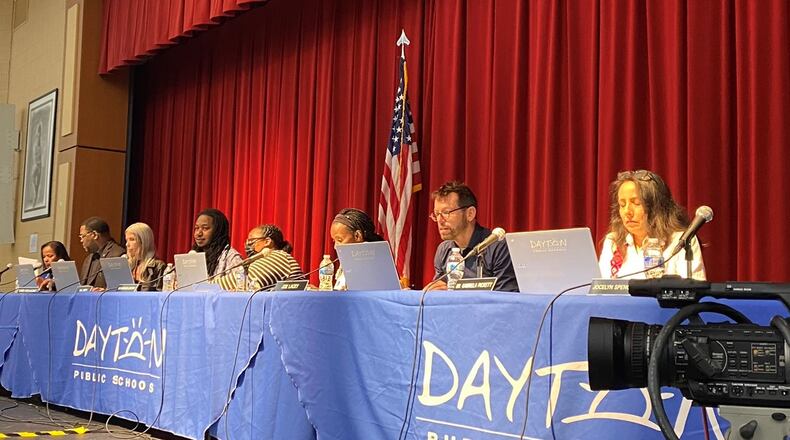“We know school transformation takes three to five years, so we’re trying,” Minor said at the Nov. 21 school board meeting.
Specifically, the district wants to see more than 95% attendance, more than 65% of students proficient in third-grade reading, and more than 40% of eighth graders proficient in math. Minor said the district picked those metrics because they are research-based to show if kids are likely to graduate.
According to the 2022-2023 state report card, Dayton Public Schools had roughly an 85% attendance rate last year. Shehee and Minor said 10.5% of eighth graders were proficient in math last year, while 33.6% of third graders were proficient in literacy.
While the goals aim for huge increases, Shehee told the board the goals are based on data.
“We’re going to work as hard as we possibly can,” Shehee said.
The district has historically been graded low on state report cards. This year, DPS received two stars overall out of a possible five and was ranked the lowest out of the eight large, urban school districts in the state. The district received a D in 2019-2020, when districts were graded based on an A-F scale.
Credit: Jim Noelker
Credit: Jim Noelker
The new academic plan includes seven main principles:
- Creating a culture of high achievement;
- High quality professional development;
- High-quality instructional leadership, leading to;
- High-quality instruction (teaching);
- Accountability and assessment;
- Parent and community engagement;
- Positive school climate and culture.
Beneath those are a series of more than 30 significant action steps — expanding the truancy team and work hours for attendance clerks; mandating “science of reading” training for preschool to eighth-grade teachers and others; providing a summer bridge program for students entering middle school or high school in 2024-25; offering resiliency skills training and guidance counseling aimed at high school readiness.
Minor and Shehee said the district plans to accomplish these goals working with the community, especially with DPS parents and the nonprofits that partner with Dayton Public.
Shehee said the district would be held accountable via multiple assessments and data collected at various grade levels — the number of students moved from preschool to kindergarten, reading scores in third grade and math scores in eighth grade, the number of suspensions and expulsions at the high school level, and the students who graduate and are expected to enroll in the military, go into a high-demand field or attend college.
For teachers, the district plans to improve the instructional materials used and implement high-quality staff training, but also create learning cohorts and “professional learning communities” to help teachers improve. Shehee said the district is also being transparent about what data they are using to make these decisions.
The two administrators said the document is subject to change as the district gathers more data and continues to implement the plan.
Interim Superintendent David Lawrence has implemented multiple changes since he took over the position in July, including changes in leadership.
Minor and Shehee were hired at the beginning of this school year, though they both worked for Dayton Public Schools during previous stops. Before coming back to DPS, Shehee was the principal at Rushmore Elementary in Huber Heights, while Minor was a principal at Dayton Business Technology High School.
The Dayton school district has made a variety of changes over the years to try to improve the district’s achievement rating, whether via new curriculum, or new school models, or revamped busing to improve attendance.
In the 2021-2022 school year, former superintendent Elizabeth Lolli implemented a two-teacher model in grades one, two and three that had one teacher working with a small group of students on math while the other teacher worked on reading.
At the beginning of this school year, Lawrence scrapped that plan and moved to a model that still had two teachers in the room but both teachers were teaching the same lesson simultaneously.
About the Author



